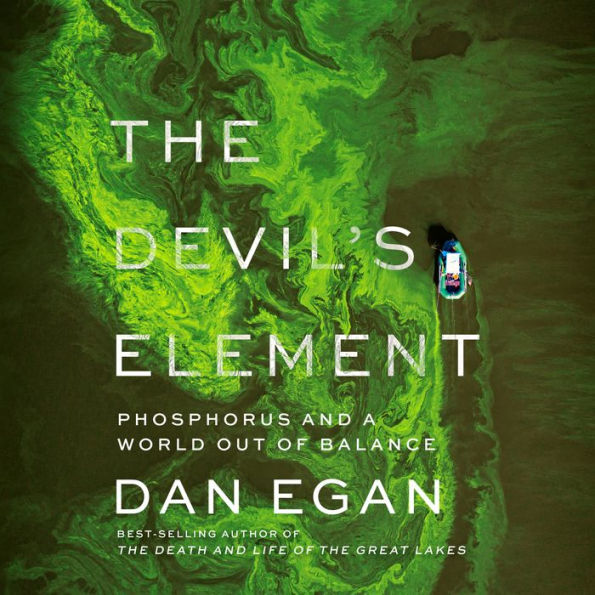Publishers Weekly
11/28/2022
Journalist Egan (The Death and Life of the Great Lakes) delivers a cautionary history of the mineral phosphorous. He emphasizes its importance to the natural world and human societies, tracing its discovery to 17th-century alchemist Hennig Brandt, who distilled phosphorous from urine and capitalized on its “otherworldly” glow to sell it as a novelty. Because phosphorus is essential to soil, 19th-century British agriculturalists took advantage of bones’ high phosphorous content and established “bone-crushing mills” where soldiers’ skeletons were made into fertilizer. Later in the century, phosphorous mining grew into a ravenous industry whose operations across the globe endangered many Indigenous Pacific islanders and ignited a bloody conflict on the Western Sahara. Today, Egan notes, the overuse of phosphorous drives such environmental catastrophes as toxic algae blooms. Though phosphorous is deadly in its elemental form—British bombs dropped on Hamburg in 1943 were “packed with phosphorous”—the mineral is also crucial to the functions of cells, DNA, and photosynthesis. The dark history highlights the element’s overlooked centrality to human life, and Egan makes sure to counterbalance his warnings of phosphorus overuse with strategies to cope with potential shortages, including “aggressively” recycling manure. This will ignite readers’ curiosity. (Mar.)
Booklist (starred review)
"A revelatory book that exposes human use of [phosphorus] as a double-edged sword capable of sustaining and destroying life."
ProPublica - Anna Clark
"The urgent story of the 13th element to be discovered."
Deborah Blum
"Dan Egan is one of the best environmental writers working today. And this book proves that all over again."
Milwaukee Journal Sentinel - Jim Higgins
"In his crisply written new book…Dan Egan sounds alarms on both the scarcity and overabundance sides of the phosphorus-human equation."
Science - Robert W. Howarth
"An enjoyable, lively, and thought-provoking read…[P]eppered with fascinating details…I highly recommend The Devil's Element, which presents an easily digestible introduction to a major global issue."
Undark - Julia Rosen
"In the tradition of environmental clarion calls like Silent Spring and The Sixth Extinction…The Devil's Element urges readers to confront another quietly unfolding disaster…Egan, a two-time Pulitzer Prize finalist for his work chronicling the threats facing the Great Lakes, has a knack for telling big, unwieldy stories through absorbing personal narratives."
Chicago Review of Books - Garin Cycholl
"[Egan] builds a story of innovation, failure, recovery, and looming catastrophe.… [A] deep humanity resides in his writing."
Kirkus Reviews
2022-12-08
A disquieting study of what Foreign Policy called “the gravest natural resource shortage you’ve never heard of.”
Phosphorus was discovered in 1669 by a German alchemist who observed a white, waxy solid that glowed in the dark and burst into flame “just a little above room temperature.” Egan, who won the Los Angeles Times Book Prize for The Death and Life of the Great Lakes, explains its most vital role: producing food. Two of three essential elements in fertilizer—nitrogen and potassium—are nearly inexhaustible. Not so with the third. When phosphorus runs out, plant growth stops, and feeding 8 billion humans requires massive amounts of fertilizer. Morocco and the Western Sahara hold 70% to 80% of the world’s phosphate reserves, which may or may not run out in this century. After a short history of its production, Egan devotes most of the book to phosphate poisoning. All life requires phosphorus, including ancient blue-green algae. Thriving on a massive inflow of phosphate, they are destroying America’s rivers and lakes. They often cover bodies of water with “guacamole-thick,” toxic mats, and as they die, they suck out the oxygen, producing dead zones. Egan tells the tragic story of Lake Erie. For most of the 20th century, detergents, sewage, and industrial waste produced a widely publicized dead body of water. The Clean Water Act of 1972 was a significant milestone, and by the 1980s, Lake Erie was clean. However, by the turn of this century, it died again, the result of the act’s one yawning exemption: agriculture. Massive phosphate-rich fertilizer from farms and manure from titanic feed lots poured into rivers that emptied into the lake. After recounting the havoc phosphate wreaks elsewhere, the author turns to possible solutions. We waste about 80% of agricultural phosphate, so there is room for improvement. Unfortunately, many current efforts are confined to pilot projects—e.g., recycling sewage and manure—or are largely symbolic, such as banning phosphate from lawn fertilizer.
A fine account, worthy of fertile discussion, of yet another environmental disaster.



